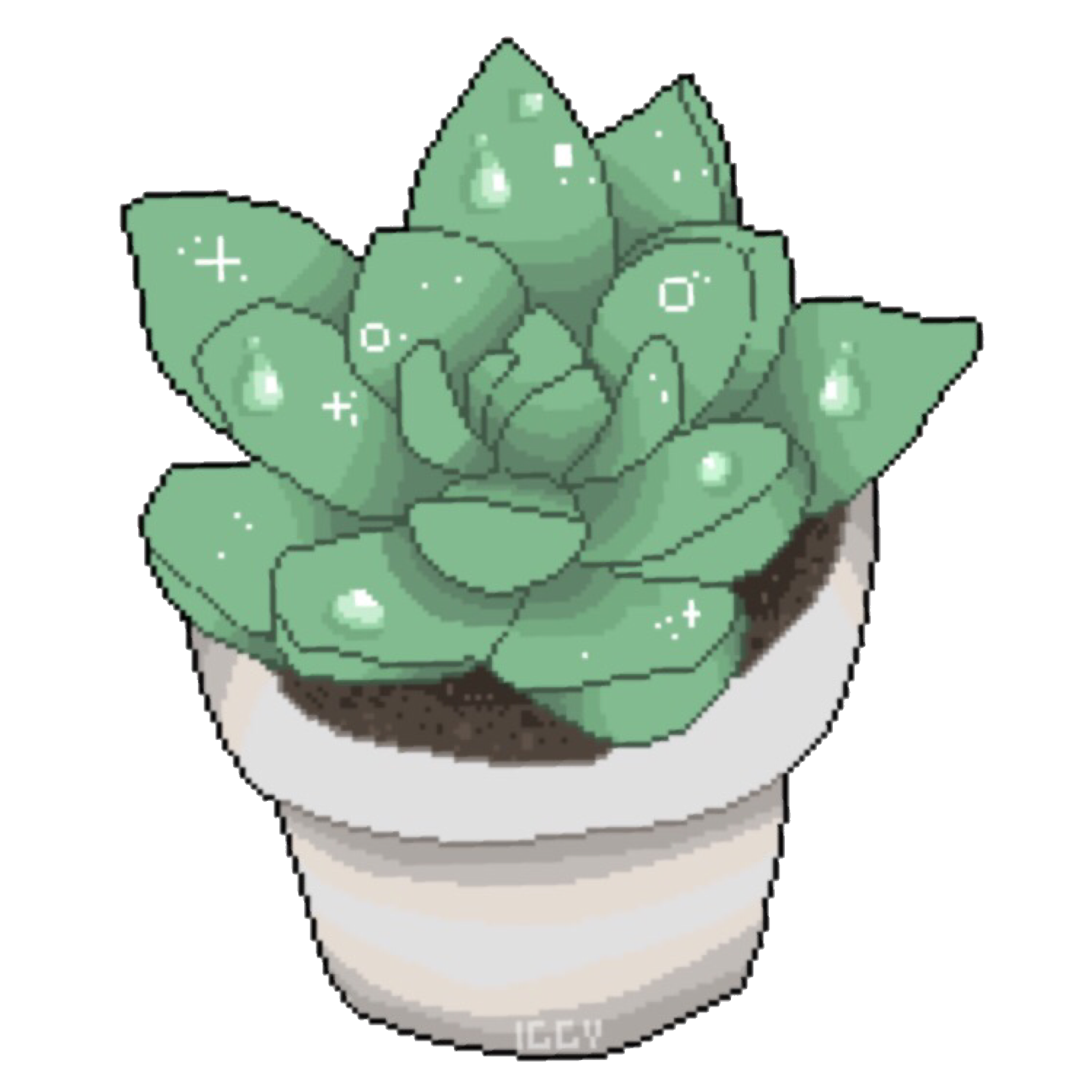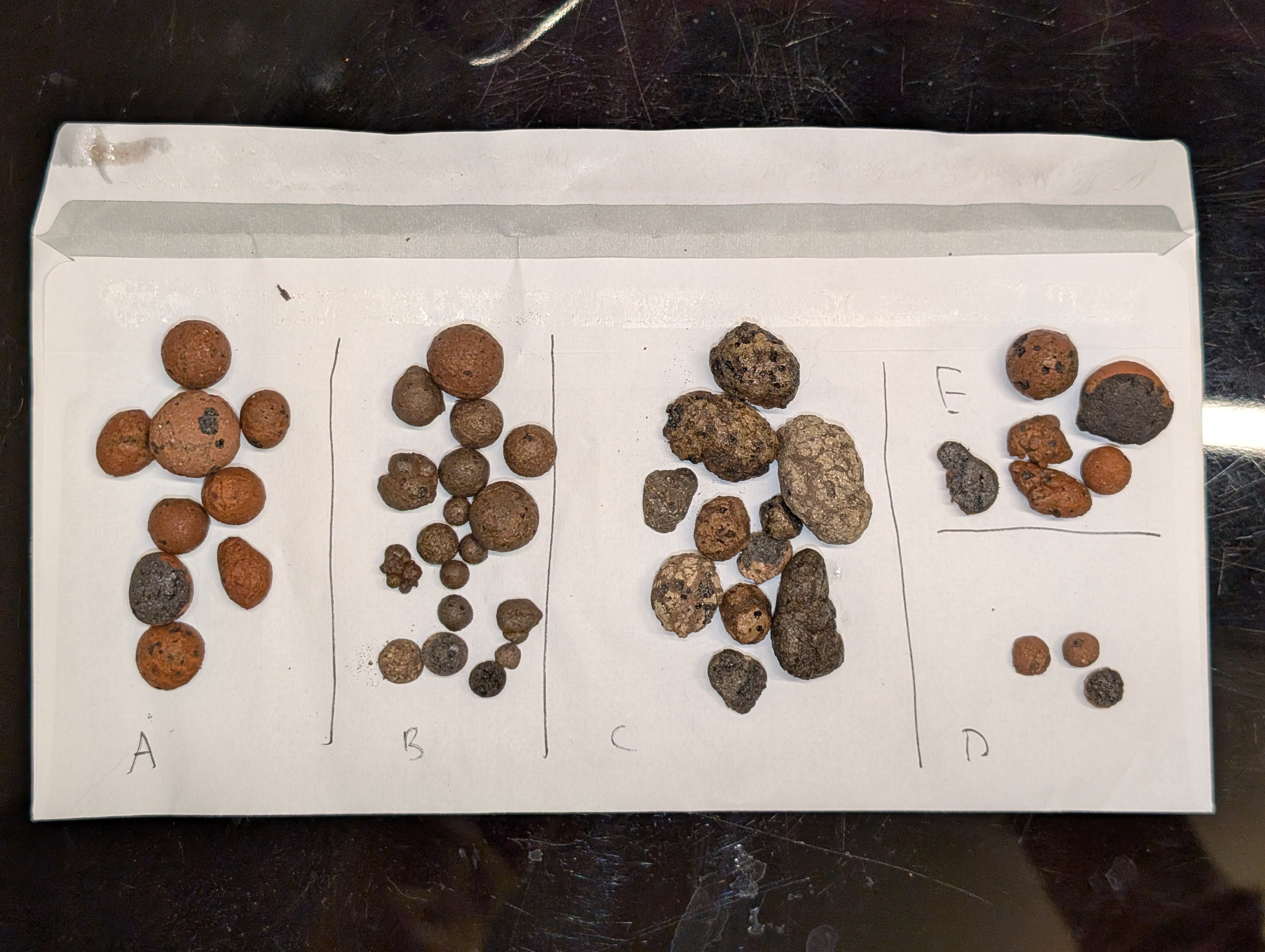28
I've tried and compared many different types and brands of LECA. Here's what I've learnt [Guide] - SLRPNK
slrpnk.netLECA (hydro clay balls, my media of choice) isn’t LECA. There are many different
brands and types around on the market.
TL;DR: The best brand is…
::: spoiler It doesn’t matter! Just use the cheapest one you can find.
I made an overview about the different types at the end. ::: # Here are the
properties that matter tho: ### - Size: - Small balls have a stronger capillary
action. They pull up the nutrient solution stronger, which results in a wetter
medium, and sometimes more salt buildup at the top. - There’s less space between
the balls the smaller they are. This results in less airflow, but more contact
area for the roots.
For bigger plants and epiphytes (Orchids, monstera, etc.) you might prefer
bigger clumps, and for stuff like ferns or small pots in general smaller beads
are better. ### - Shape: - Irregular shaped beads anchor the roots better -
Rounder ones have more airflow and are easier to sift - When you spill some, the
round balls will roll all over your apartment, while the irregular shaped ones
stay more in place. Easier to clean up ;) - Reusing: speaking of cleaning up,
rounder balls will be easier to remove the roots. But, I just throw them into
the pressure cooker, and the roots turn into mush and remove themselves. ### -
Porousity/ Density: - They are all working fine, doesn’t matter much - Some will
float forever, some will sink to the bottom when submerged - Some types crack in
the oven and explode when cleaning for reuse. You’ll have to be careful and
increase the temperature slowly to burn off plant matter. That step usually
isn’t needed tho.
# How can you tell if a brand is high quality or not? ### - Size variation: A
good product has beads that are uniformly sized. If there are a lot of small
balls, they fill the gaps and worsen the aeration. ### - Amount of “junk” in
there: I’ve had some bags where I found some wood chips, plastic stuff and
unpopped kernels/ pieces of clay in there.
They usually aren’t a huge problem, but still kinda annoying. And that’s it! #
Overview and pictures ## Overview
[https://slrpnk.net/pictrs/image/d39cc253-e521-4777-8a43-c1e554976ecc.jpeg] I
live in Germany, so many of the brands probably aren’t available to you. That
doesn’t matter tho, since the “type” matters more than the brand. ## A I got
this one from Dehner, a local garden store.
- Expensive
- Good median size distribution, very round shaped and smooth surface. - Doesn’t
float
[https://slrpnk.net/pictrs/image/6d4eee16-f2eb-4550-8cbf-ab31ec8af874.jpeg]
[https://slrpnk.net/pictrs/image/dd76bb3c-870d-4461-b041-62f22b4ee793.jpeg]
[https://slrpnk.net/pictrs/image/6f396641-0dad-4265-bf1c-53b88c45183b.jpeg]
[https://slrpnk.net/pictrs/image/52cf014a-b0d0-4303-9b05-7eaca50310f4.jpeg] ## B
- Cheap - I got this from Action, a local dollarstore
- Very bad size distribution. Lots of very small beads.
- Dense - Uniformly round
[https://slrpnk.net/pictrs/image/d72f9deb-9f74-4f85-8636-196ecffee8d8.jpeg]
[https://slrpnk.net/pictrs/image/a67e4d68-7946-46fd-a8eb-869f144b9286.jpeg] ## C
Brand: Floragard - Cheapest, from Amazon
- Irregular shaped, rough surface
- Good size distribution, but some are very big - Floats, very light
- Explodes in oven
- Still one of my favourites
[https://slrpnk.net/pictrs/image/9e56faa7-a8be-4a48-9e59-a4a3f57ab9c9.jpeg]
[https://slrpnk.net/pictrs/image/267e9ddf-7c4a-4138-8f01-59e4cca5e722.jpeg]
[https://slrpnk.net/pictrs/image/5c936f75-e388-4e63-bc05-f30233ace251.jpeg] ## D
- Also from Dehner
- Very uniform size distribution, but very small - Very dense
[https://slrpnk.net/pictrs/image/1abb6e52-0d94-4344-98e3-dd63a30e4b5c.jpeg]
[https://slrpnk.net/pictrs/image/8da2e4f9-6b39-4a95-bfaf-2e8c4766d0b6.jpeg] ## E
[https://slrpnk.net/pictrs/image/40332d44-fee9-4faf-9667-eb0ac9cef120.jpeg]
Crosspost from [email protected]
You must log in or register to comment.


